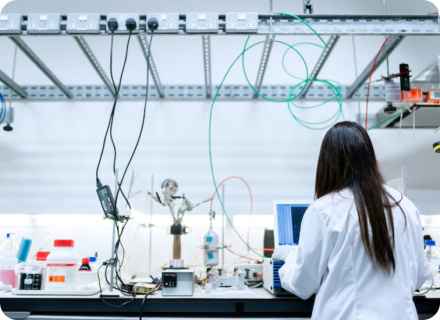Proposed Ventilation Requirements for Public Indoor Spaces
This document lays out proposed ventilation and air cleaning requirements for governments, businesses, and building operators. SARS-CoV-2 transmission is higher indoors than outdoors¹ and transmission is substantially reduced by indoor ventilation.² The failure to enhance ventilation and air cleaning puts the users of buildings at unnecessary risk.
1. Monitor CO2 levels: Measuring Carbon Dioxide (CO2) is the best way to judge the amount of exhaled air in an indoor space; higher levels of CO2 indicate a higher percentage of the air in a room has already been breathed by someone else. Publicly viewable CO2 monitoring devices should be installed in all government/business/public shared indoor spaces (“indoor spaces”). Indoor CO2 levels should not exceed 800 PPM (if no filtering is used) or 1000 ppm, if significant HVAC or portable HEPA filtering is in use.³
2. Enforce occupancy limits: All indoor spaces must specify occupancy limits based on the ability to ventilate the space to target CO2 levels.
3. Address inadequate ventilation: If an indoor space exceeds the target CO2 limit, the relevant entity must take at least one of the following actions to bring the space into compliance: 1) reduce the maximum occupancy level of the space; 2) improve natural or mechanical ventilation of the space; OR 3) install portable HEPA air cleaners. Number and size of cleaners to be determined based on size, layout, function, and occupancy of space.⁴
4. Institute an “open windows/doors” policy: Require that windows and doors always be kept open in naturally ventilated indoor spaces, unless there is a safety, security, privacy, health, weather or other significant reason for closing them.
5. Require high efficiency air filters: Require the use of MERV 13 filters or equivalent (or higher efficiency filters) in all HVAC systems.⁵ If the system cannot function with MERV 13 filters, use the highest MERV filter grade that the system will tolerate.
6. Require respirators: Respirators are more effective than surgical or cloth masks at preventing SARS-CoV-2 transmission. Require the use of N95 or equivalent respirators, including N95, FFP2, KF94, KN95, and elastomeric half masks, in all indoor spaces. Educate building users on the importance of fit and closing gaps between the respirator and the face.
7. Only use proven air cleaner technologies: Filter-based technologies such as portable HEPA filters, as well as ultraviolet germicidal light (UVGI),⁶ that could be used as supplementary treatment when filtration is limited, are proven to work against virus-containing aerosols.⁷ Foggers that spray chemicals into the air and electronic air cleaners (ions, plasmas, hydroxyls, photocatalysis) can be harmful and should be avoided.
8. Establish accountability for protective measures: Fines or penalties should be imposed on organizations that fail to implement COVID-19 measures. Following significant outbreaks among individuals who shared the same indoor space, an audit of ventilation, air cleaning, occupancy, face covering policy implementation should be conducted.
¹ Bulfone TC Malekinejad M Rutherford GW Razani N Outdoor transmission of SARS-CoV-2 and other respiratory viruses: a systematic review. J Infect Dis. 2021; 223: 550-561
² Morawska L Milton DK It is time to address airborne transmission of coronavirus disease 2019 (COVID-19). Clinical Infect Dis. 2020; 71: 2311-2313
³ Outdoor air has a CO2 level of approximately 400ppm. The exact CO2 level considered “safer” for indoor spaces varies, with organizations recommending levels between 500ppm to 950 ppm. Choosing a target CO2 level requires striking a balance between safety and the feasibility of achieving a given indoor CO2 level. The Federation of European Heating, Ventilation and Air Conditioning Associates offers further guidance on optimal indoor CO2 levels: https://www.rehva.eu/activities/covid-19-guidance/rehva-covid-19-guidance
⁴ Harvard-CU Boulder Portable Air Cleaner Calculator for Schools: https://docs.google.com/spreadsheets/d/1NEhk1IEdbEi_b3wa6gI_zNs8uBJjlSS-86d4b7bW098/edit#gid=1882881703
⁵ The following contains a guide to different filtration rating systems: https://www.airfiltersdelivered.com/c/merv-mpr-fpr-ratings
⁶ CDC Guidance on Air Cleaning Technologies: https://www.cdc.gov/coronavirus/2019-ncov/community/ventilation.html
⁷ Electronic air cleaners based on ions, plasmas, photocatalysis, hydroxyls, or those based on spraying disinfectants (hypochlorous acid, chlorine dioxide, ozone, alcohol, hydrogen peroxide) are often unproven and have the potential to do harm, and should be avoided.


